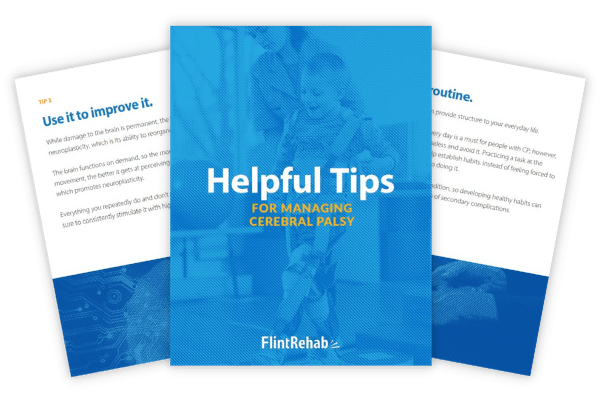Can individuals with cerebral palsy benefit from adopting a ketogenic diet? The ketogenic diet is very high in fats, moderate in proteins, and low in carbohydrates. For reference, 90% of the diet consists of fats.
Eating this way encourages the body to burn ketones instead of glucose as its primary source of fuel. It’s suggested that ketones provide a more stable source of energy, which may provide anticonvulsant and neuroprotective benefits.
But is such an extreme diet worth it?
This article will help you understand whether individuals with cerebral palsy should try a ketogenic diet by discussing its risks and benefits.
How a Ketogenic Diet Can Help Individuals with Cerebral Palsy
While research on the ketogenic diet for individuals with cerebral palsy is extremely limited, there is substantial research on the effectiveness of the ketogenic diet in reducing seizures in children with epilepsy. Epilepsy refers to a condition in which individuals experience recurring seizures.
Epilepsy is not directly related to cerebral palsy; however, the two conditions co-occur commonly enough that they’re considered associative conditions for one another. In fact, nearly 30-50% of children with cerebral palsy will also have epilepsy. Both conditions may be caused by lack of oxygen, stroke, severe head trauma, birth defects, and infections in the brain.
Ultimately, the ketogenic diet may only be helpful for individuals with cerebral palsy if they also have co-occurring epilepsy. Adopting a ketogenic diet has been demonstrated to reduce seizure frequency in 35-56% of children and adolescents with epilepsy that did not respond to medications. Dietary changes can serve as a more natural alternative to seizure management than medications or surgery.
However, if you have cerebral palsy and don’t experience seizures, adopting a ketogenic diet may not be necessary.
How Does the Ketogenic Diet Work?

The mechanisms underlying how a ketogenic diet helps prevent epilepsy have yet to be fully understood. One of the leading theories is that keto alters neuronal metabolism. Usually, our bodies use glucose from carbohydrates to produce energy quickly. This rapidly accessible energy can fuel seizures.
When you adopt a ketogenic diet, glucose levels become low and the body begins using ketones for energy. By changing your body’s fuel source to ketones, the nerves become less excitable which may reduce seizure frequency.
In the following section, we’ll discuss the risks associated with adopting a ketogenic diet.
Side Effects of the Ketogenic Diet for Individuals with Cerebral Palsy
It’s essential to be aware of the potential side effects of adopting such an extreme diet.
Side effects of the ketogenic diet include:
- Constipation
- Acidosis (acid buildup in the bloodstream)
- Dehydration
- Electrolyte imbalance
- Low blood sugar
- Impaired growth
- Lethargy
- Kidney stones
- Vitamin and mineral deficiencies
Before switching to a ketogenic diet, make sure to consult with a healthcare professional. Not everyone will respond well to a ketogenic diet and a healthcare professional can help regulate the diet. They may also be able to provide diet recommendations that are helpful, but not as restrictive as a fully ketogenic diet.
Up next, we’ll discuss potential problems associated with a ketogenic diet for children.
Is a Ketogenic Diet Safe for Children with Cerebral Palsy?

Unlike adults, children are still in the process of growing and their diets directly affect their growth.
To ensure you stay in a state of ketosis, a ketogenic diet requires careful planning and precise measurements. Even just one non-keto meal will take your body out of ketosis and can cause a seizure. Placing children on such a restrictive diet so early can subject them to developing harmful dieting habits. Many children with cerebral palsy have feeding problems and adding further dietary restrictions can be harmful to their health.
Similarly, we all know how picky children can be when it comes to food. Many children may not have the palate to carry out a ketogenic diet long-term.
However, children who do respond well to a ketogenic diet have reported significant reductions in seizures and many become seizure-free. It’s suggested that it is easier to start keto for younger children who have yet to establish their eating patterns.
Ketogenic Diet for Cerebral Palsy: Key Points
A ketogenic diet can be beneficial for children with cerebral palsy that experience seizures. The high fat, moderate protein, and very low carb diet manipulates the brain to use ketones for fuel instead of glucose.
Glucose provides quick energy that can boost neuronal excitability and cause seizures. By changing the body’s source of energy to ketones, the nerves are less excitable, which reduces the occurrence of seizures. While not all individuals will react well to a ketogenic diet, those that do often see significant improvements in seizure reduction.














